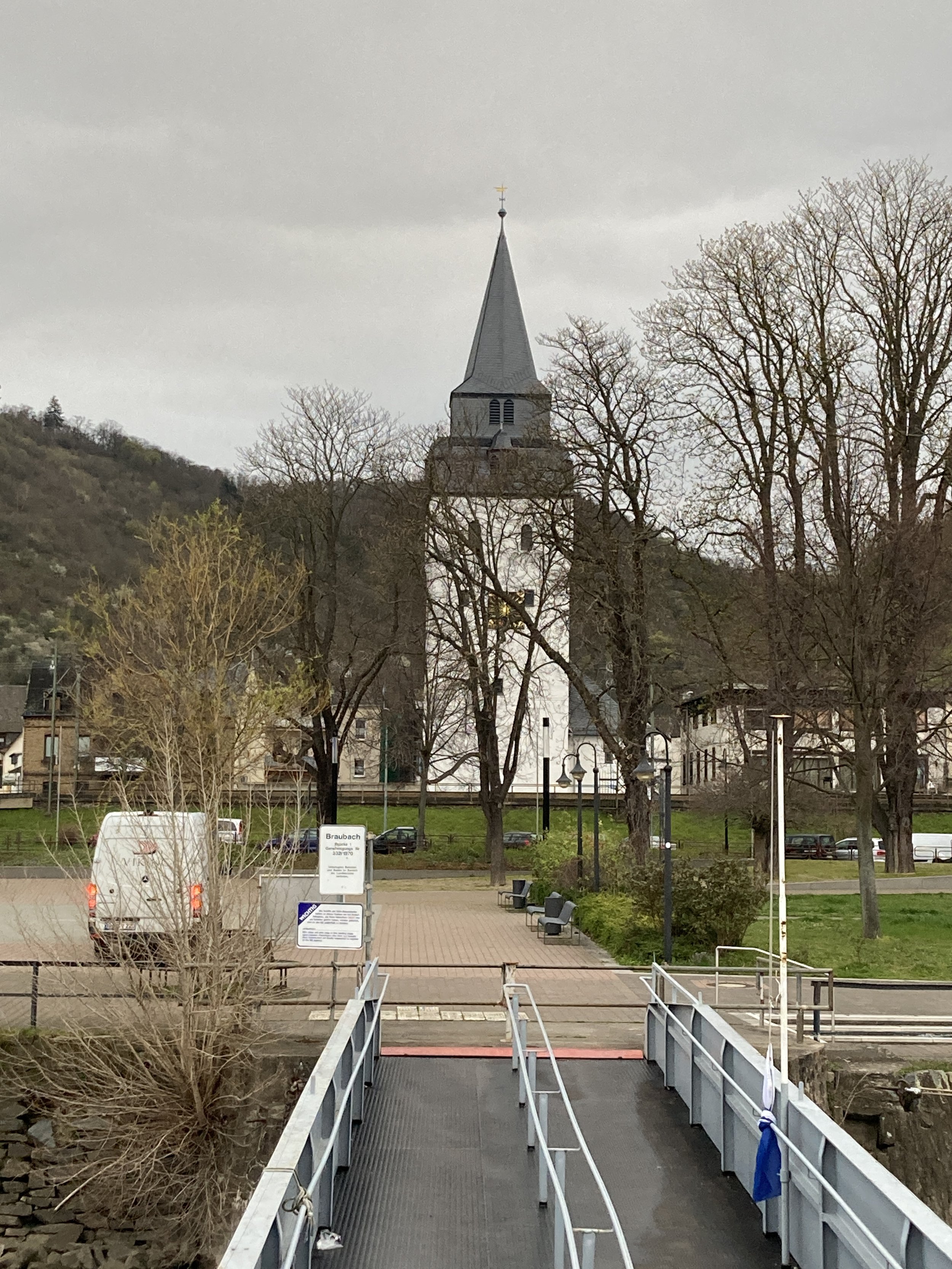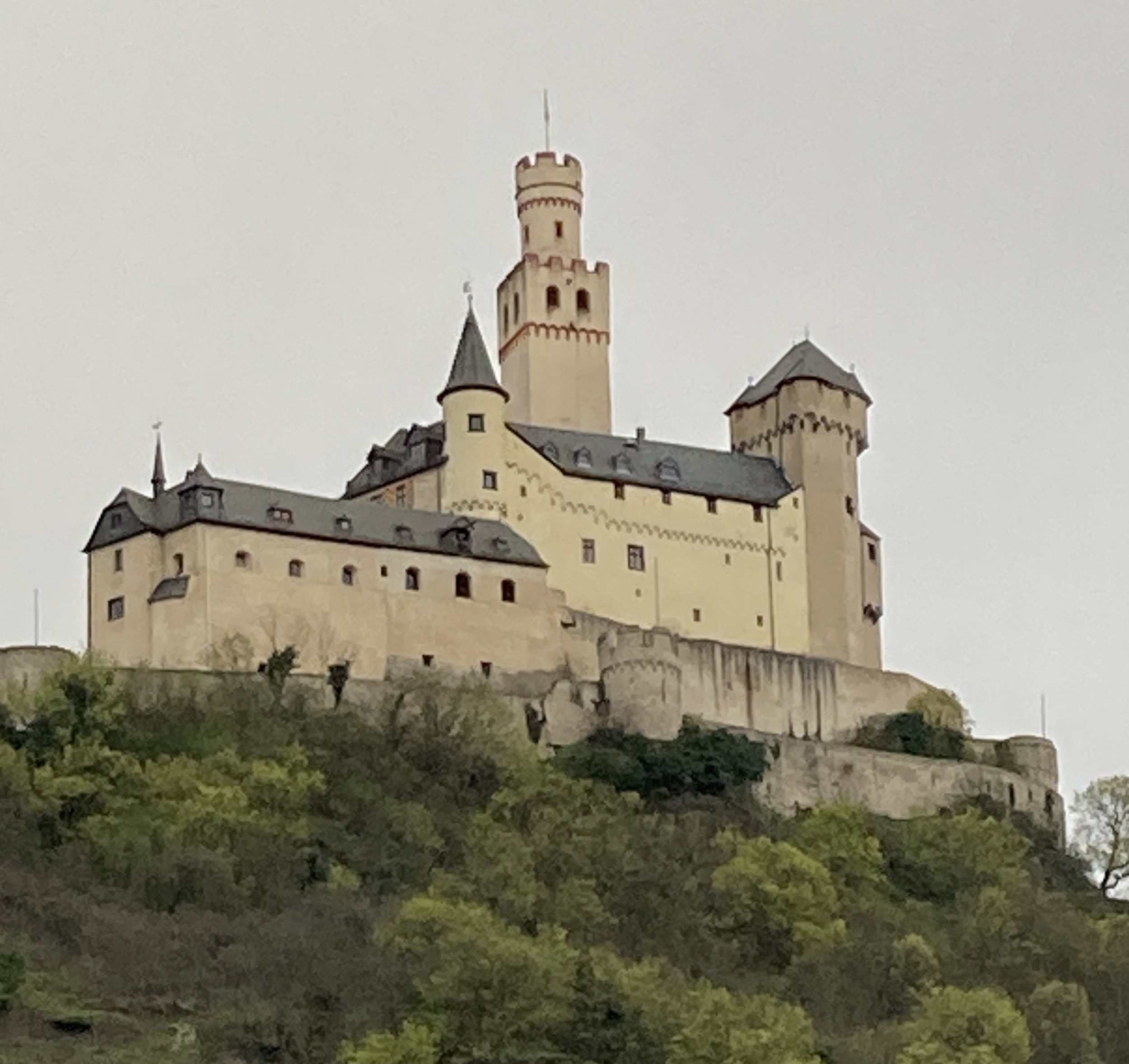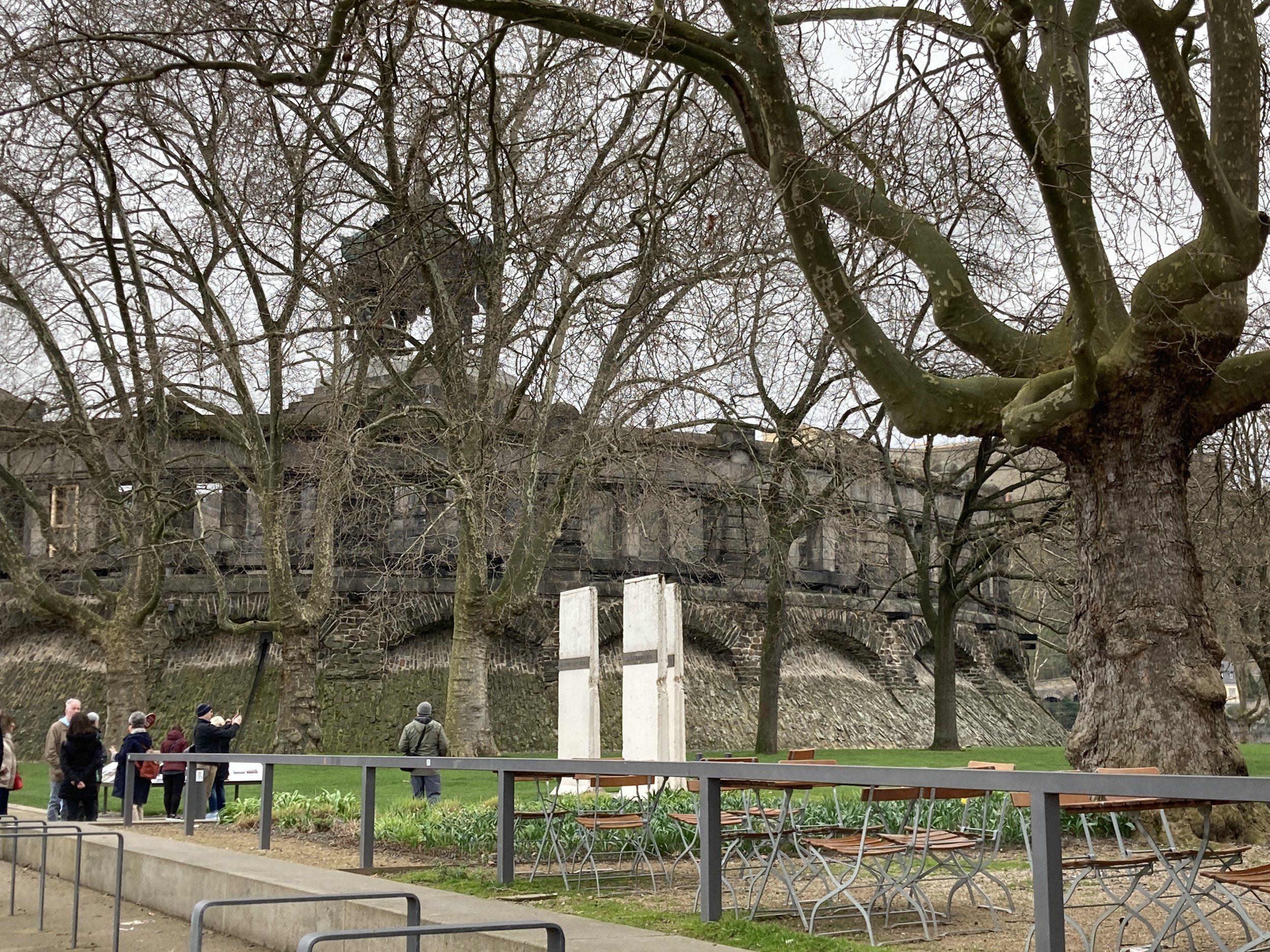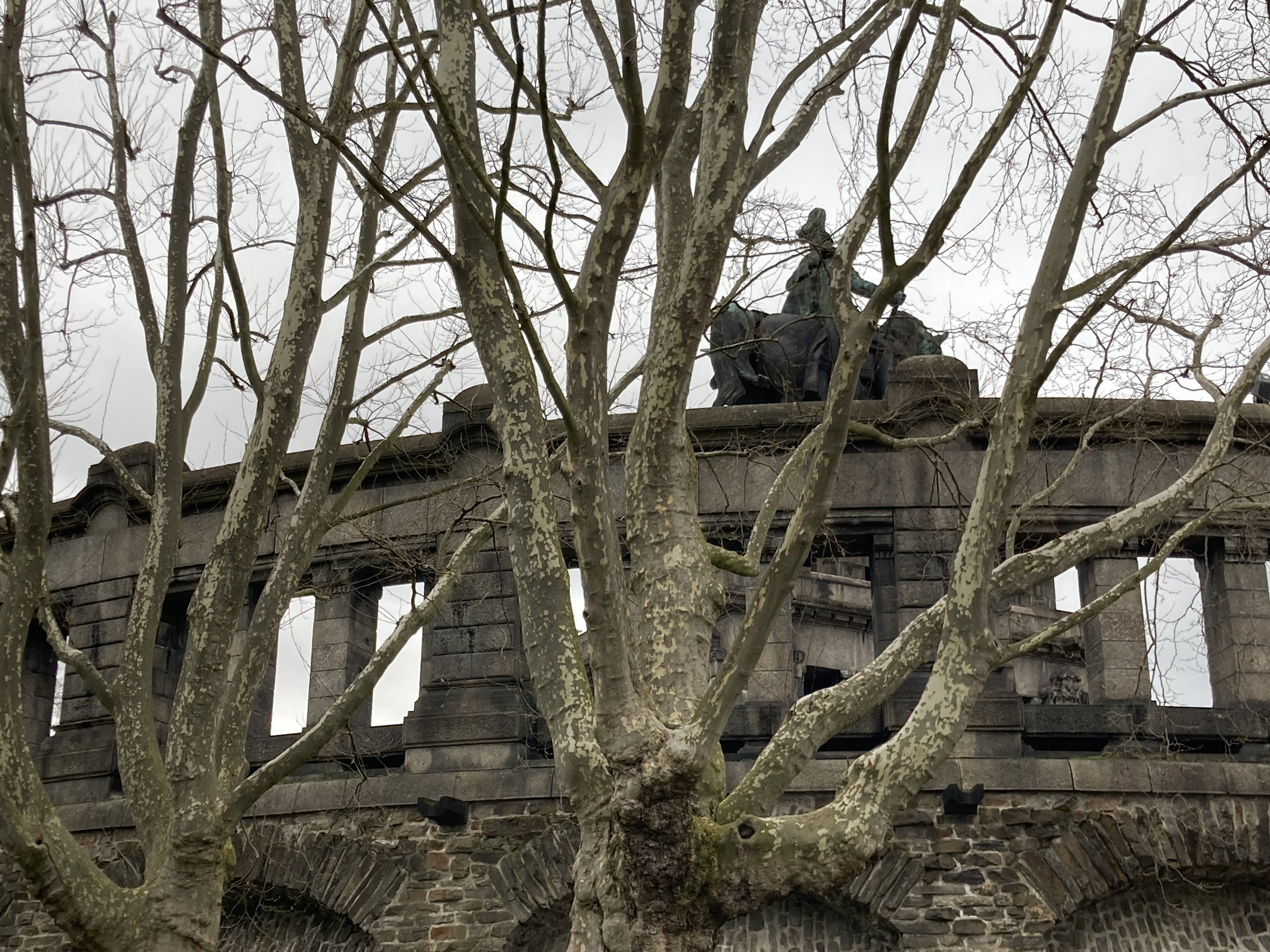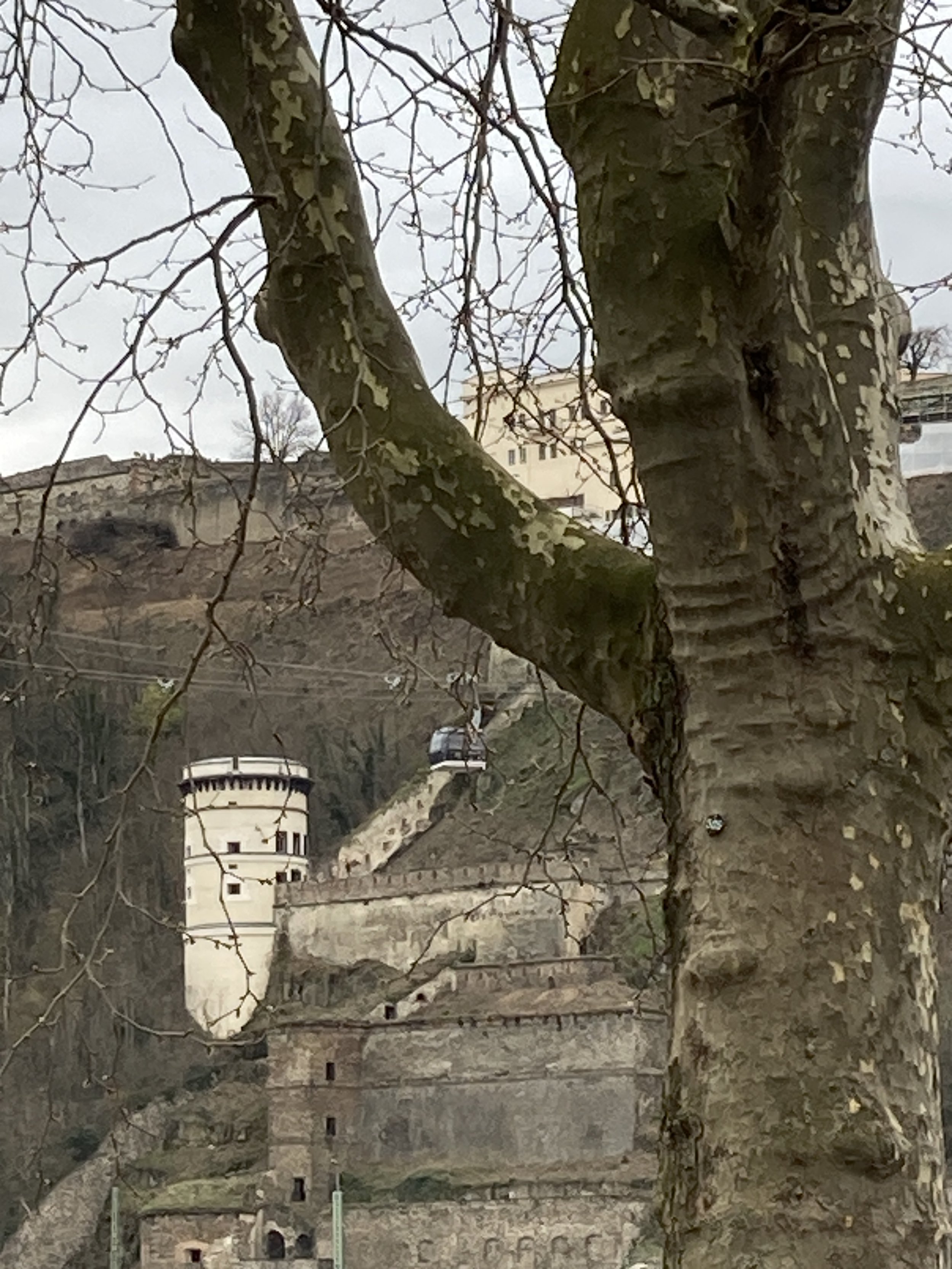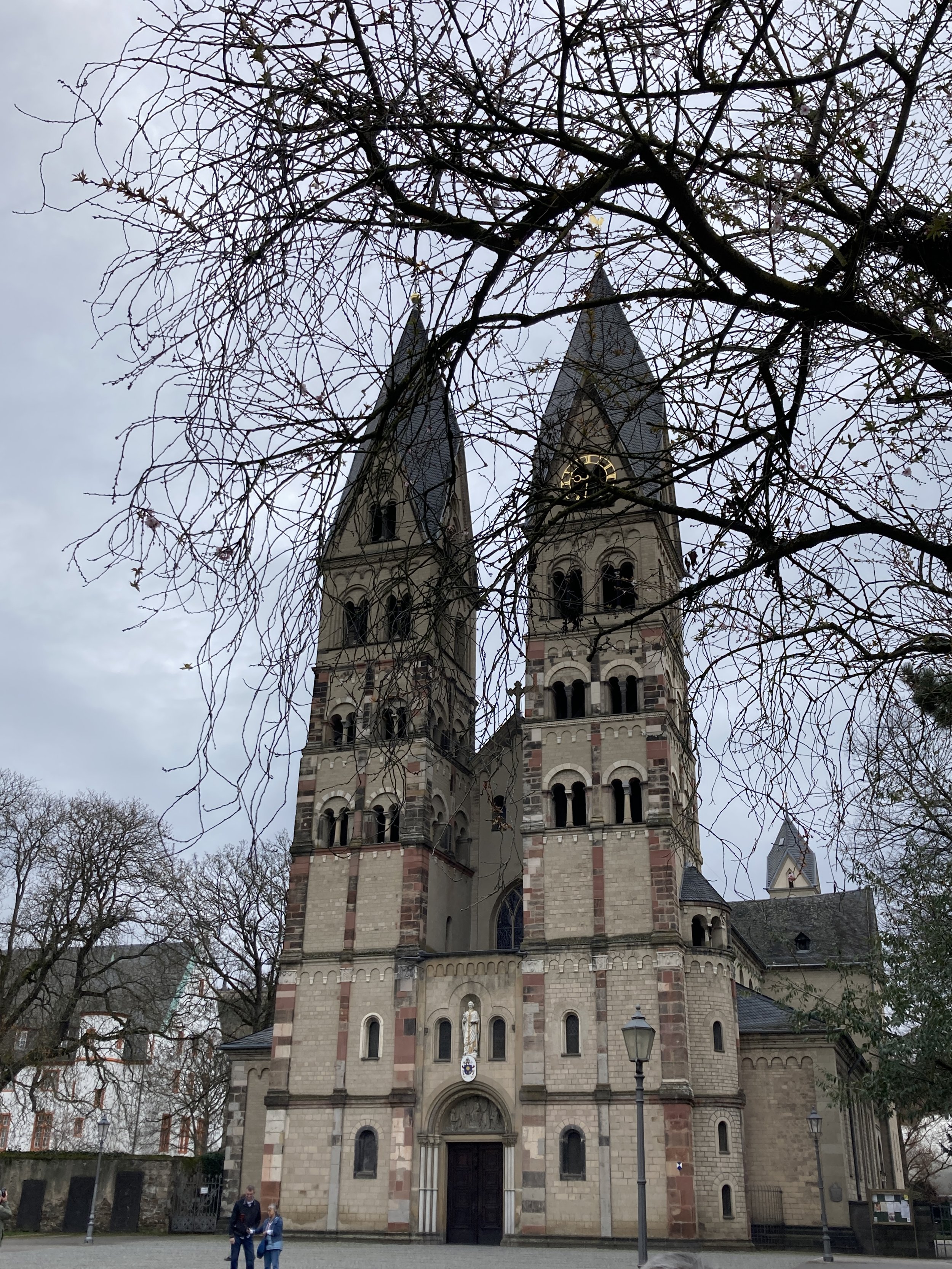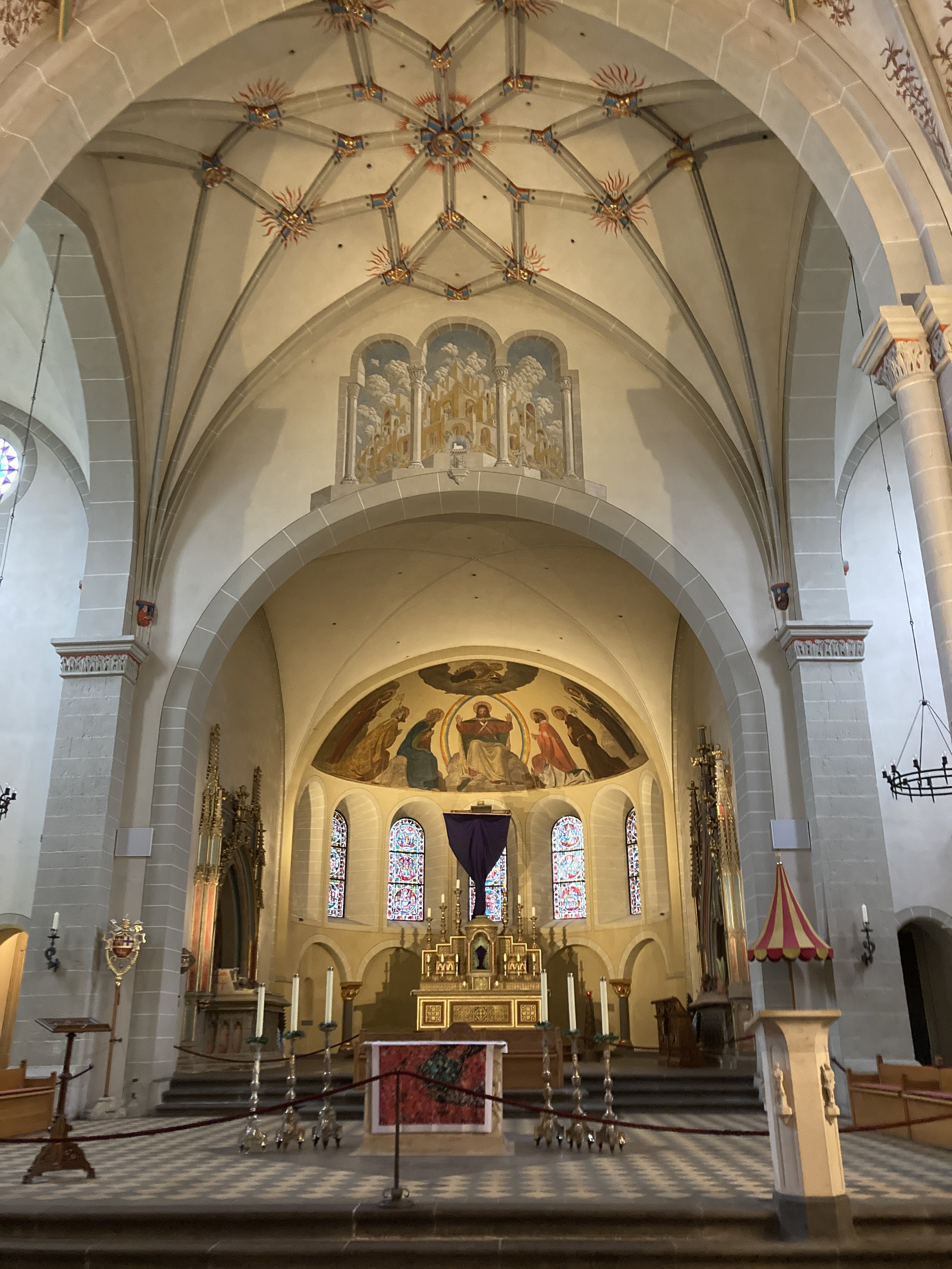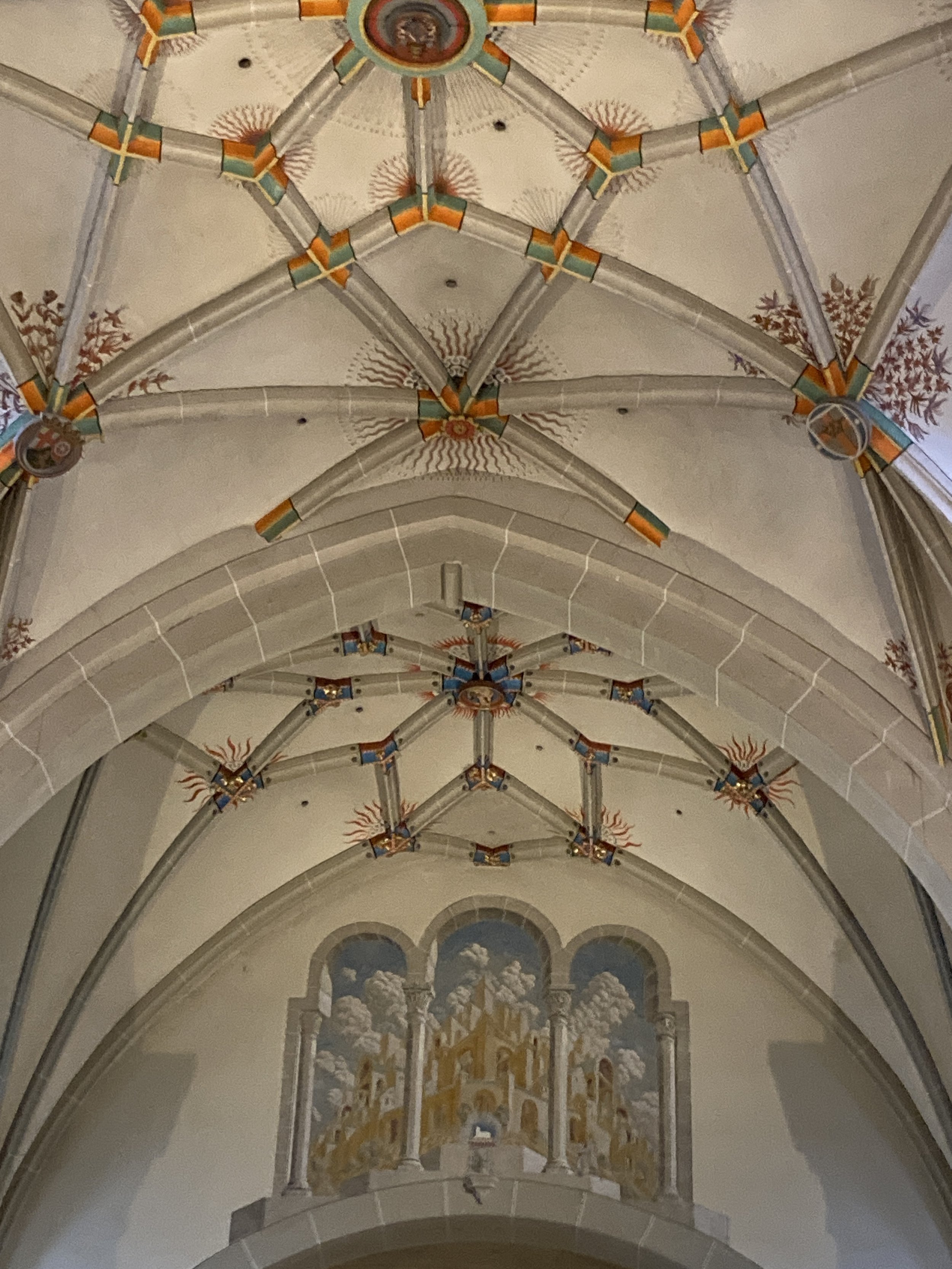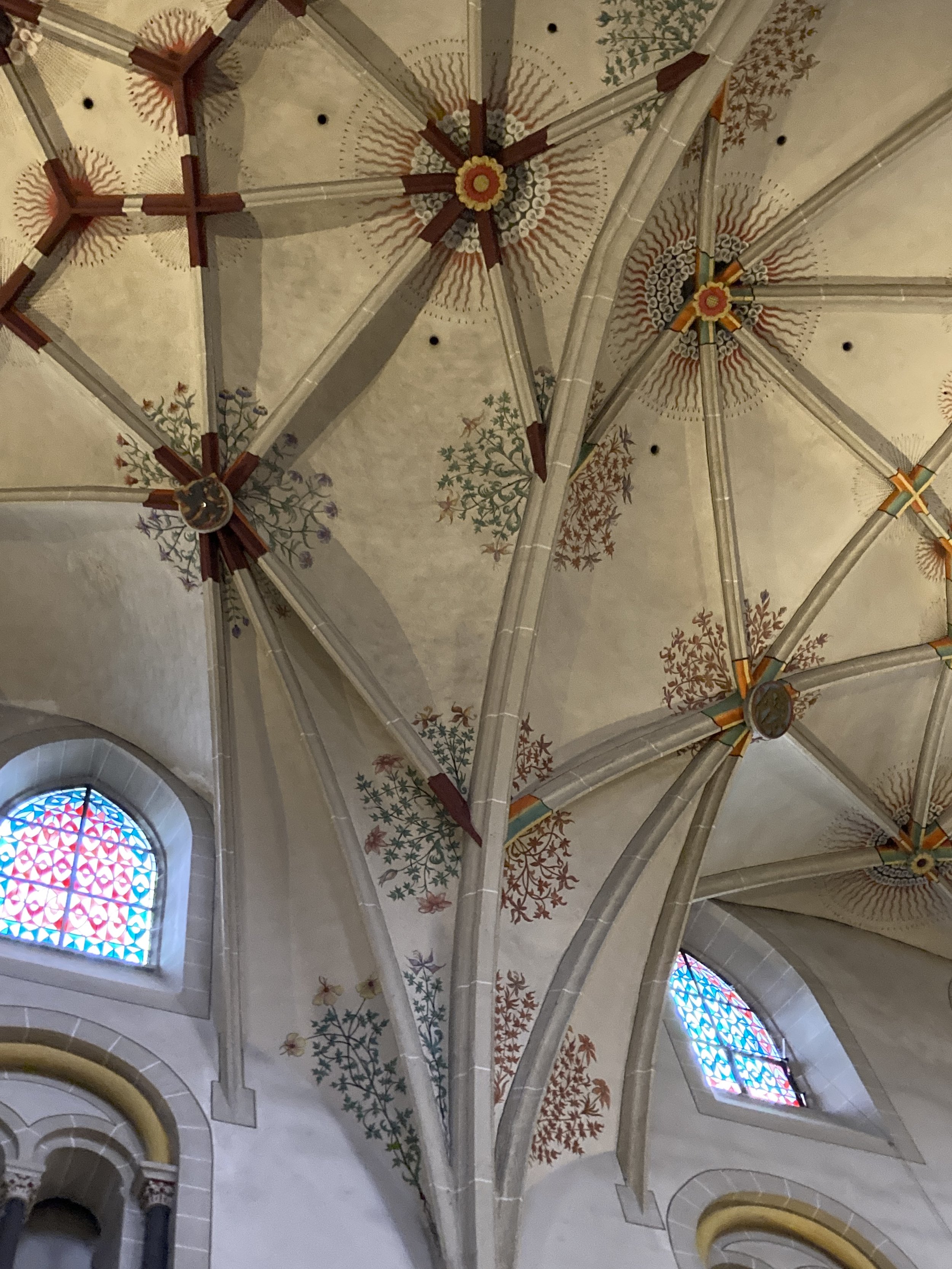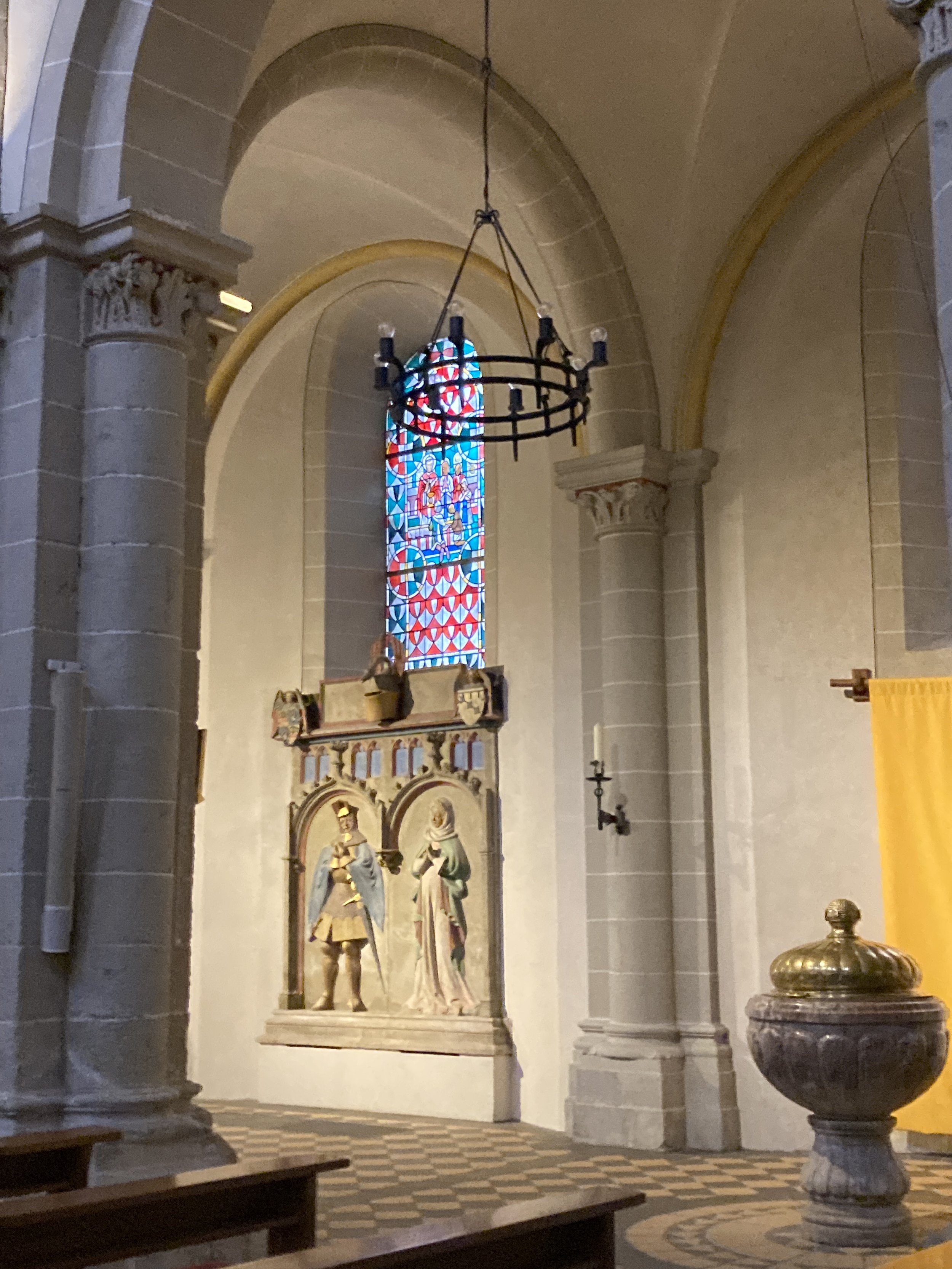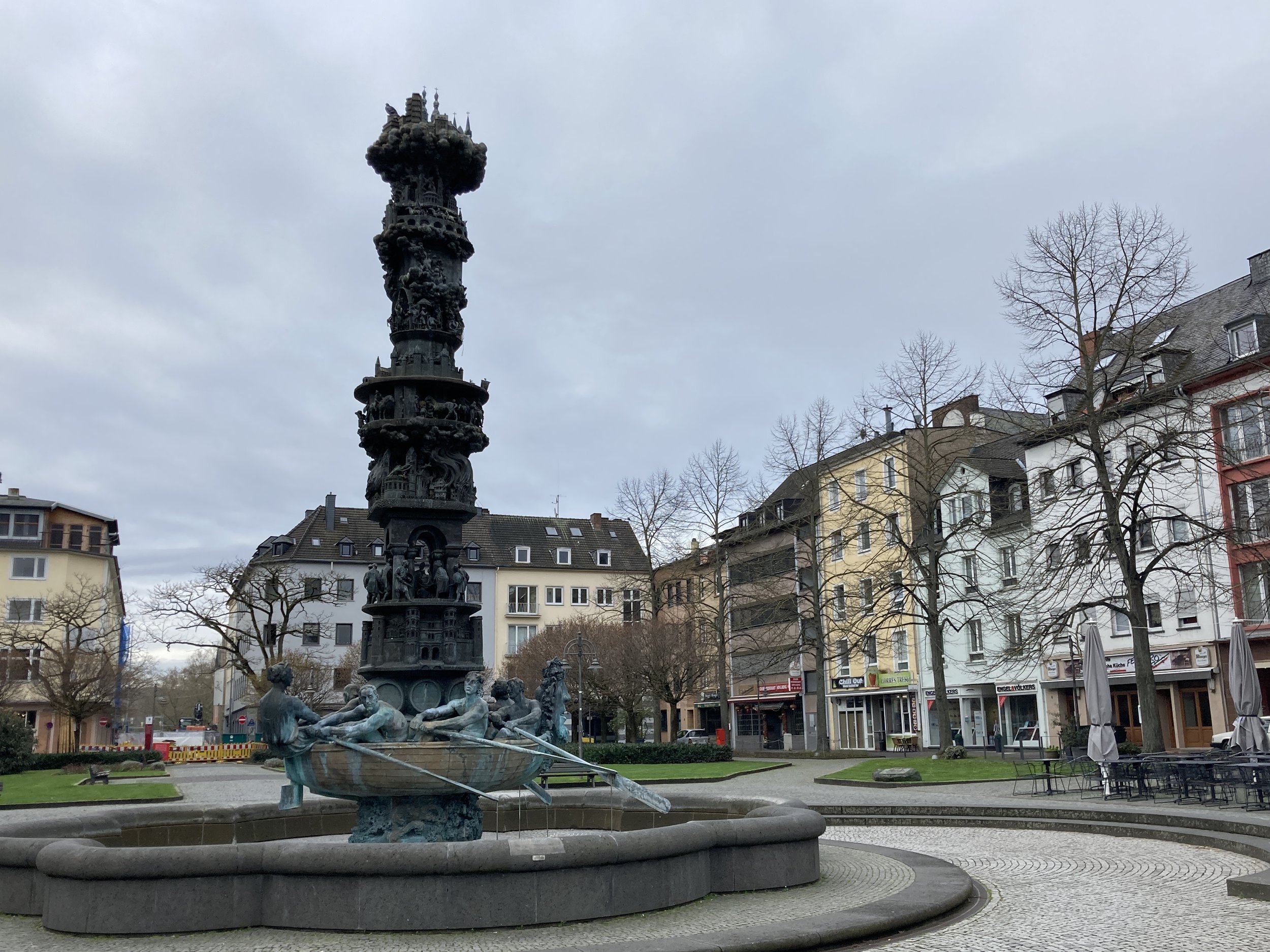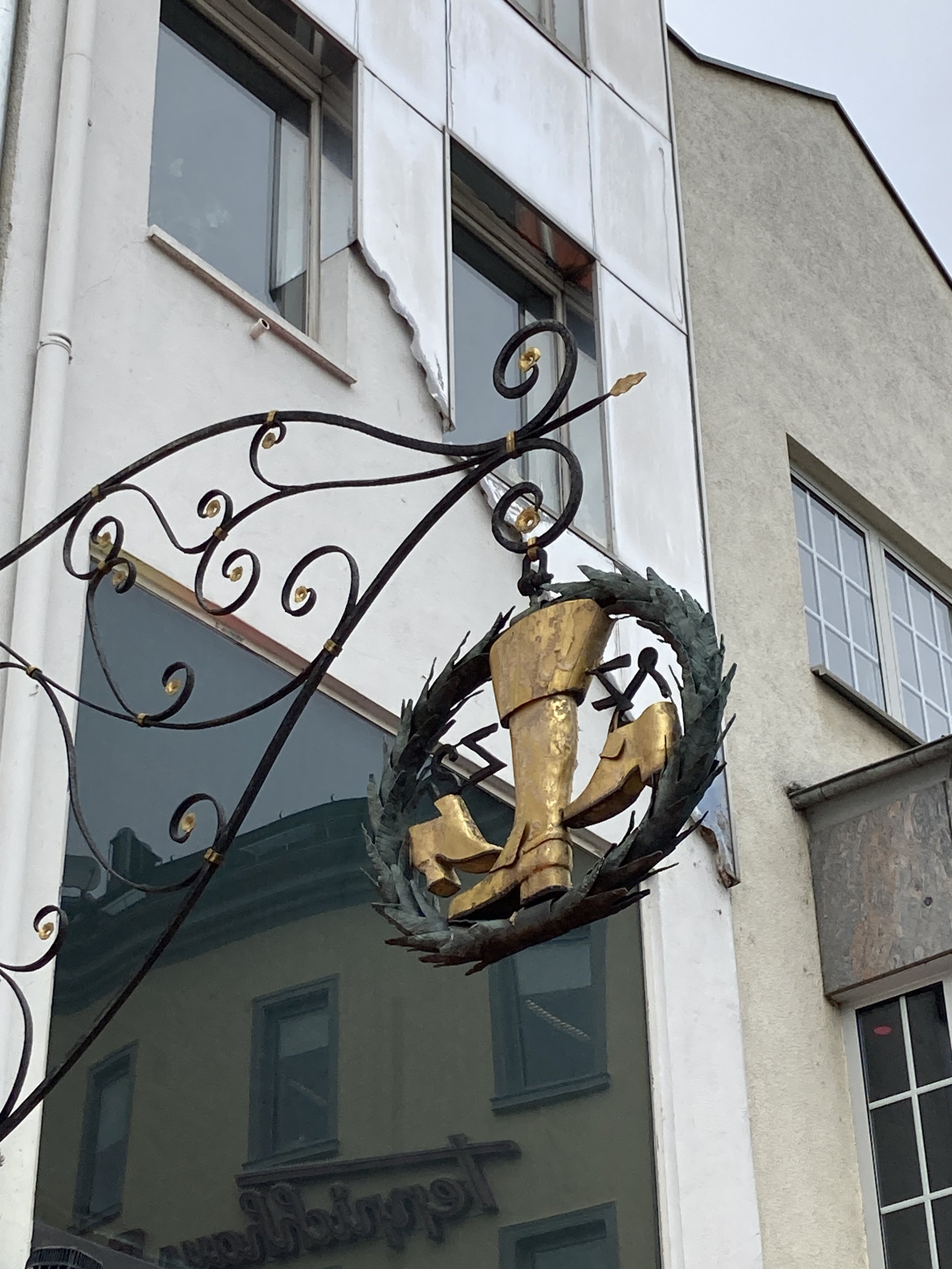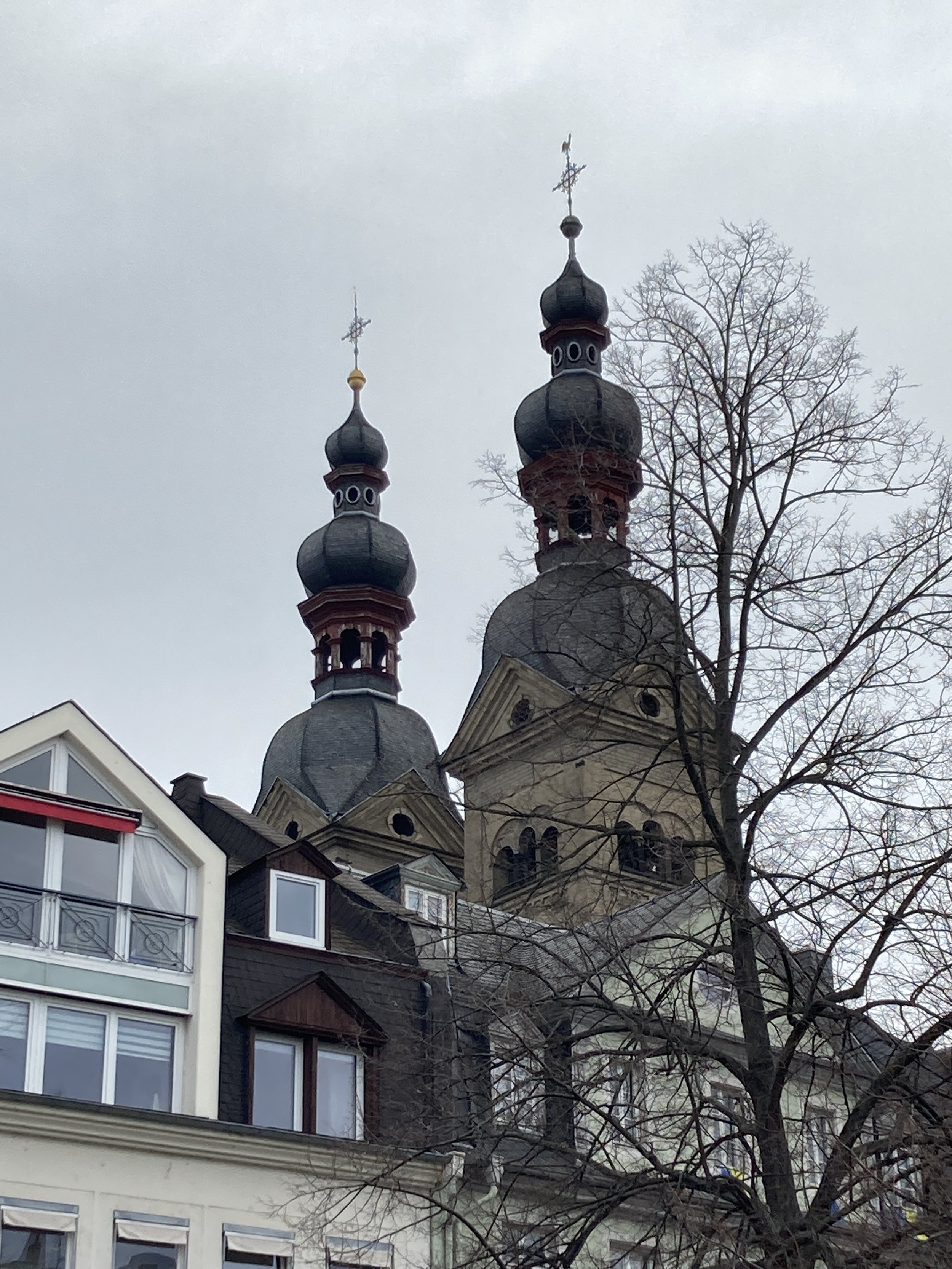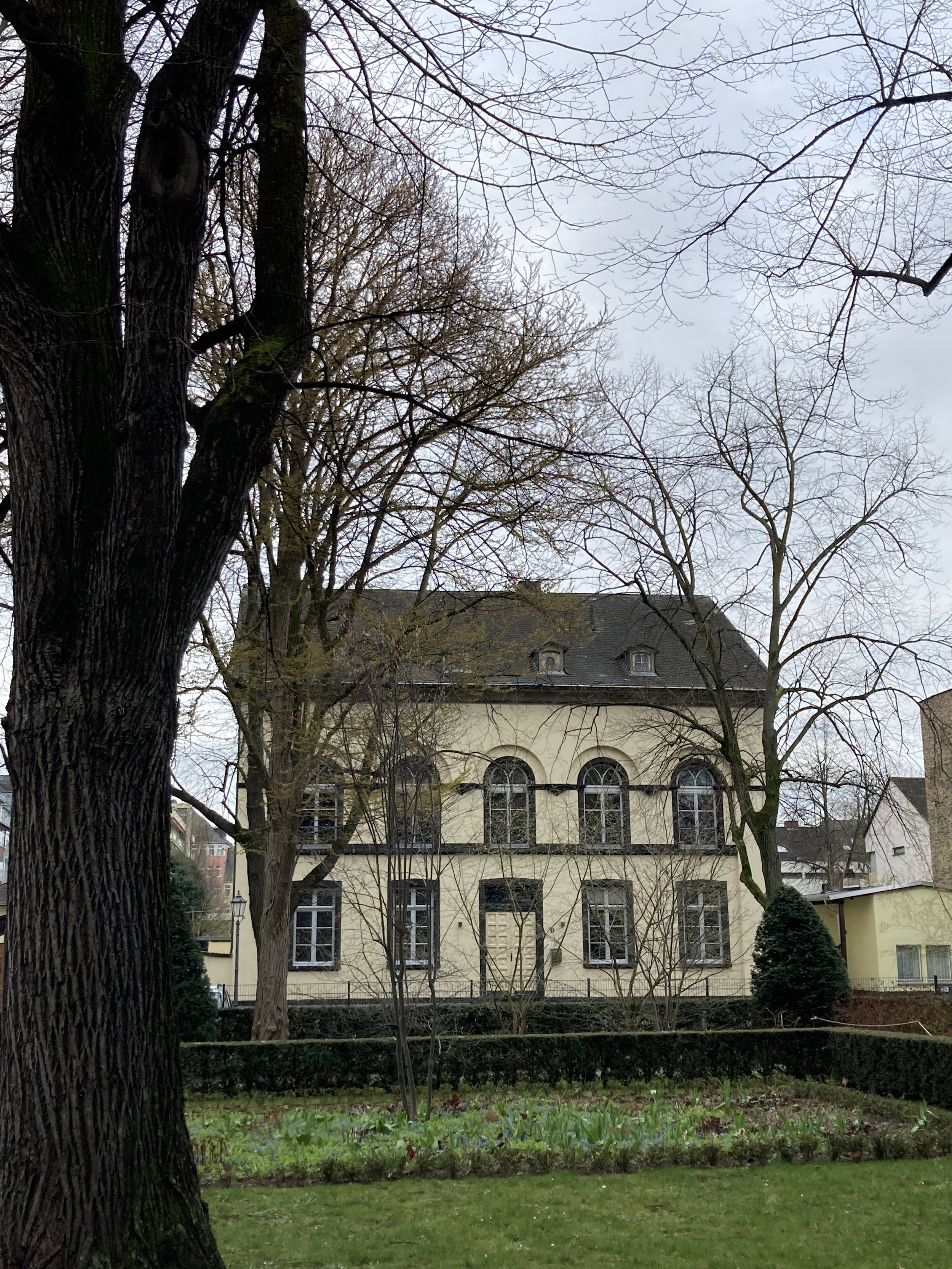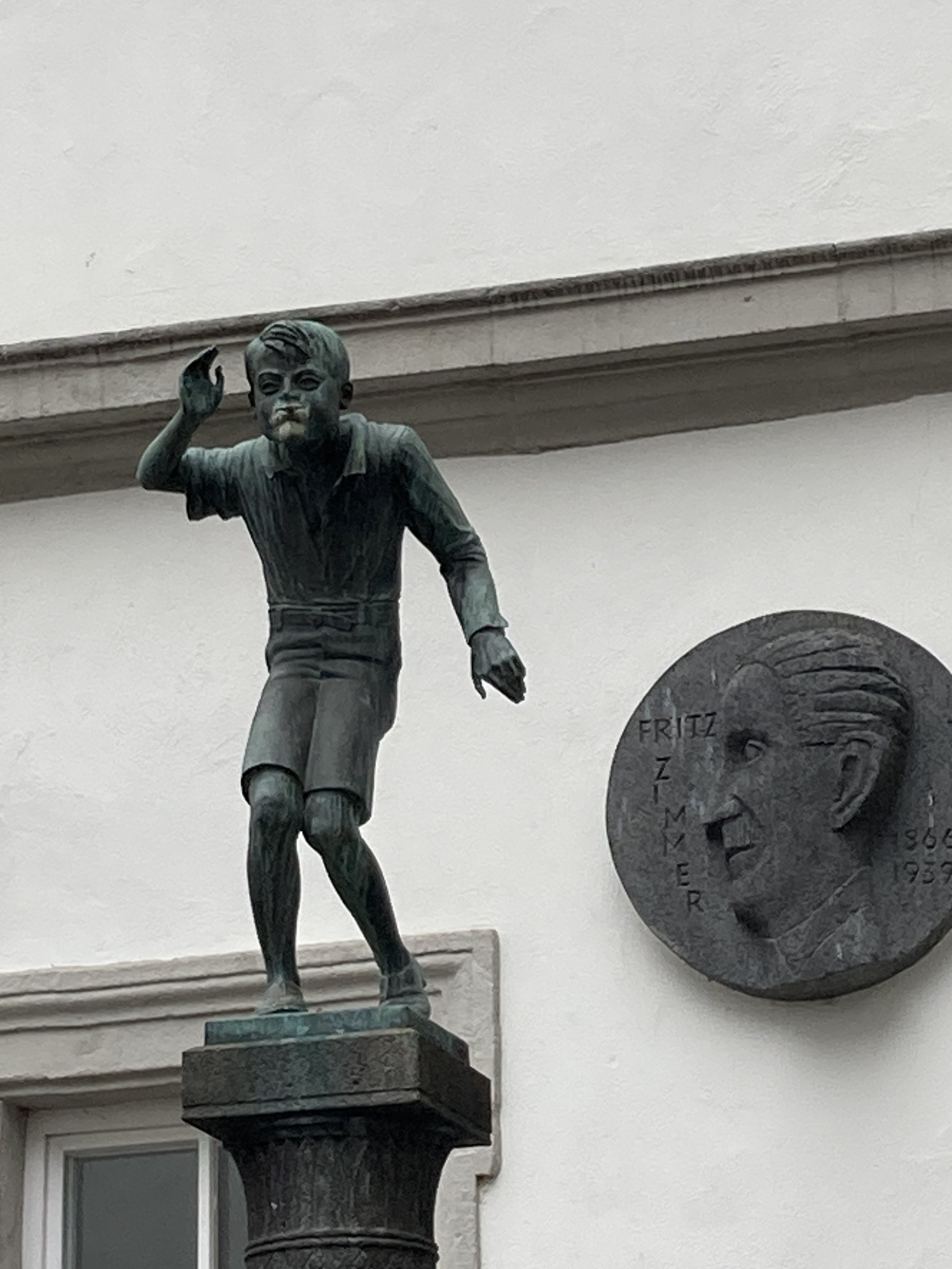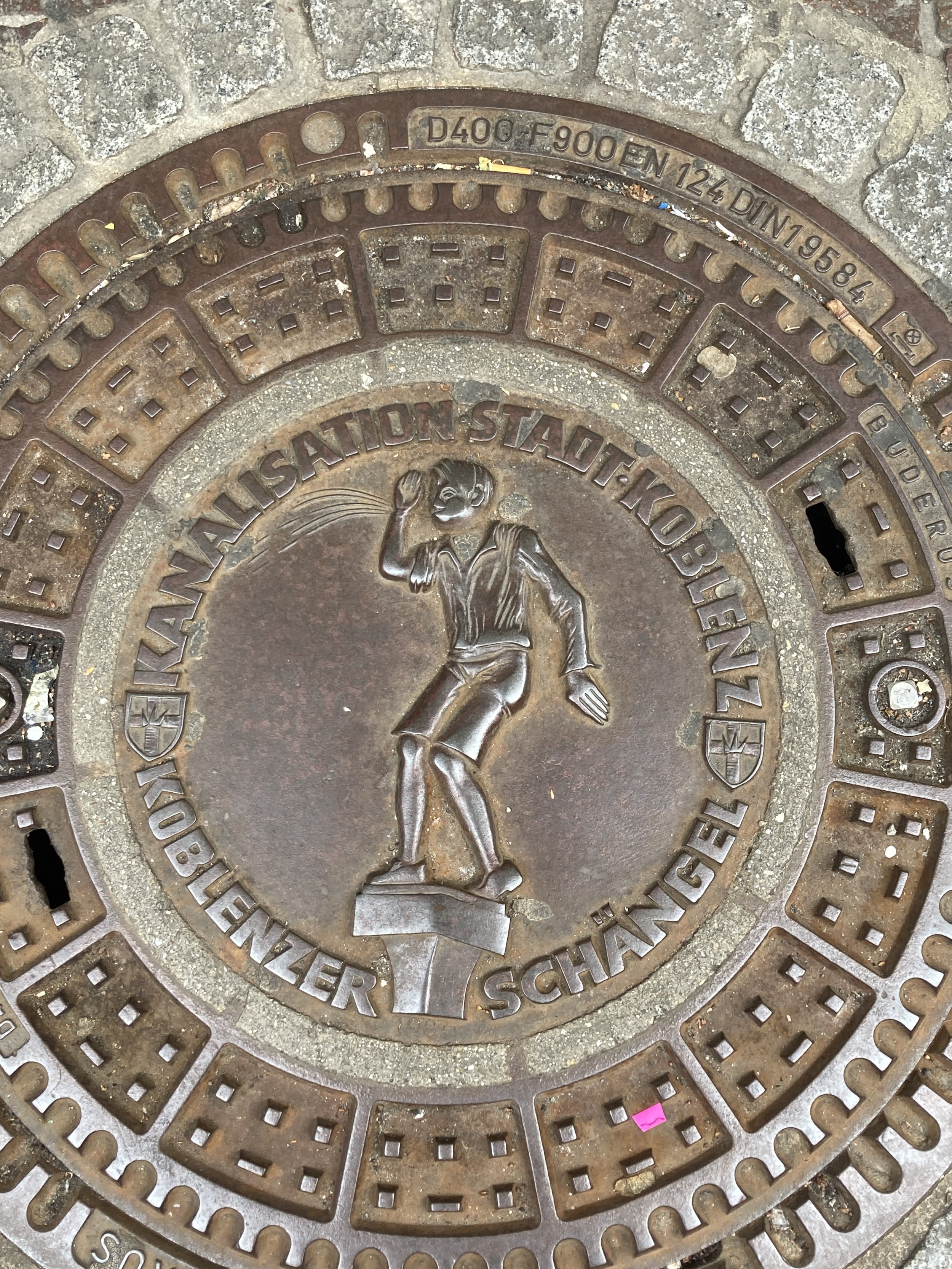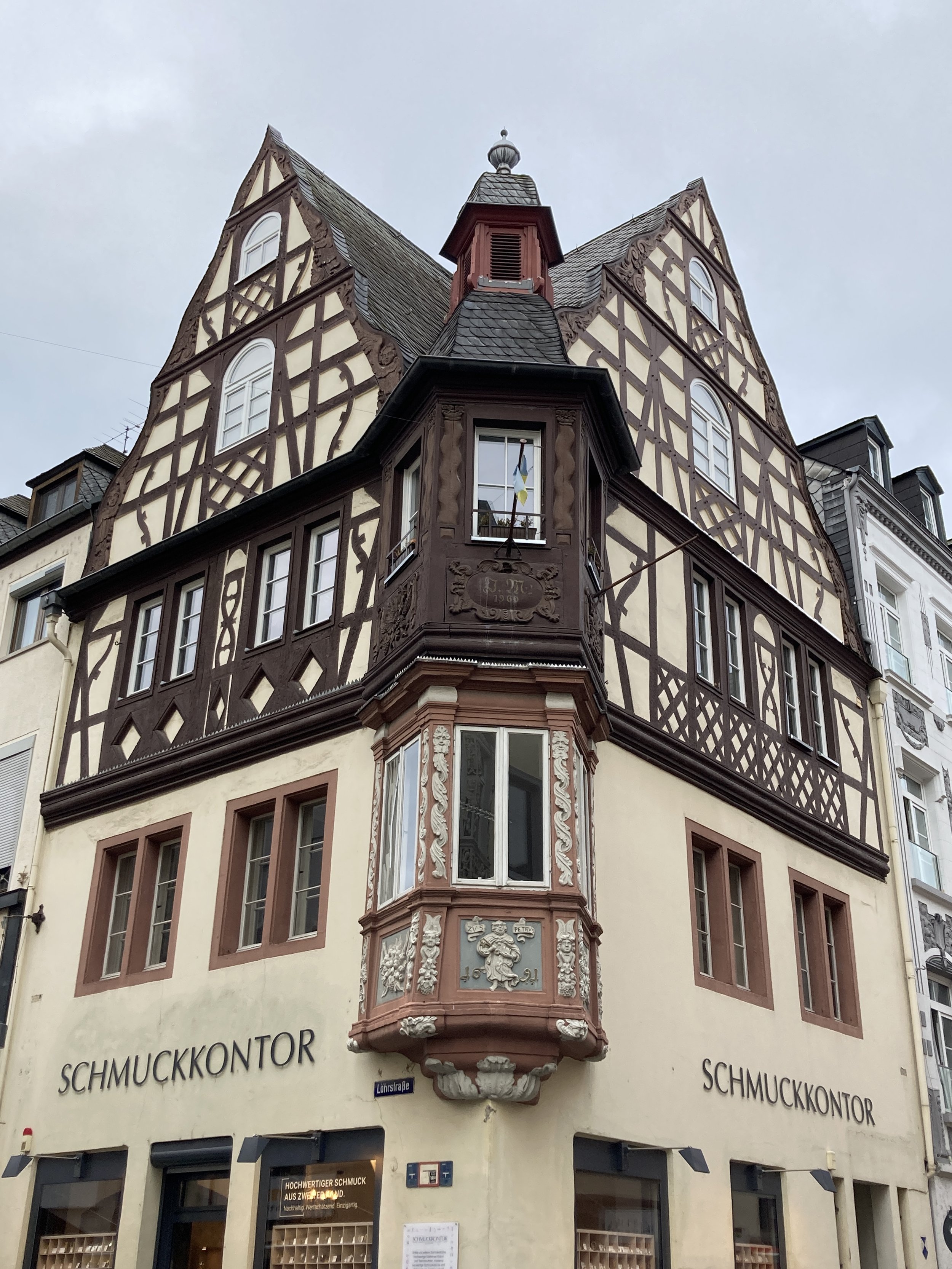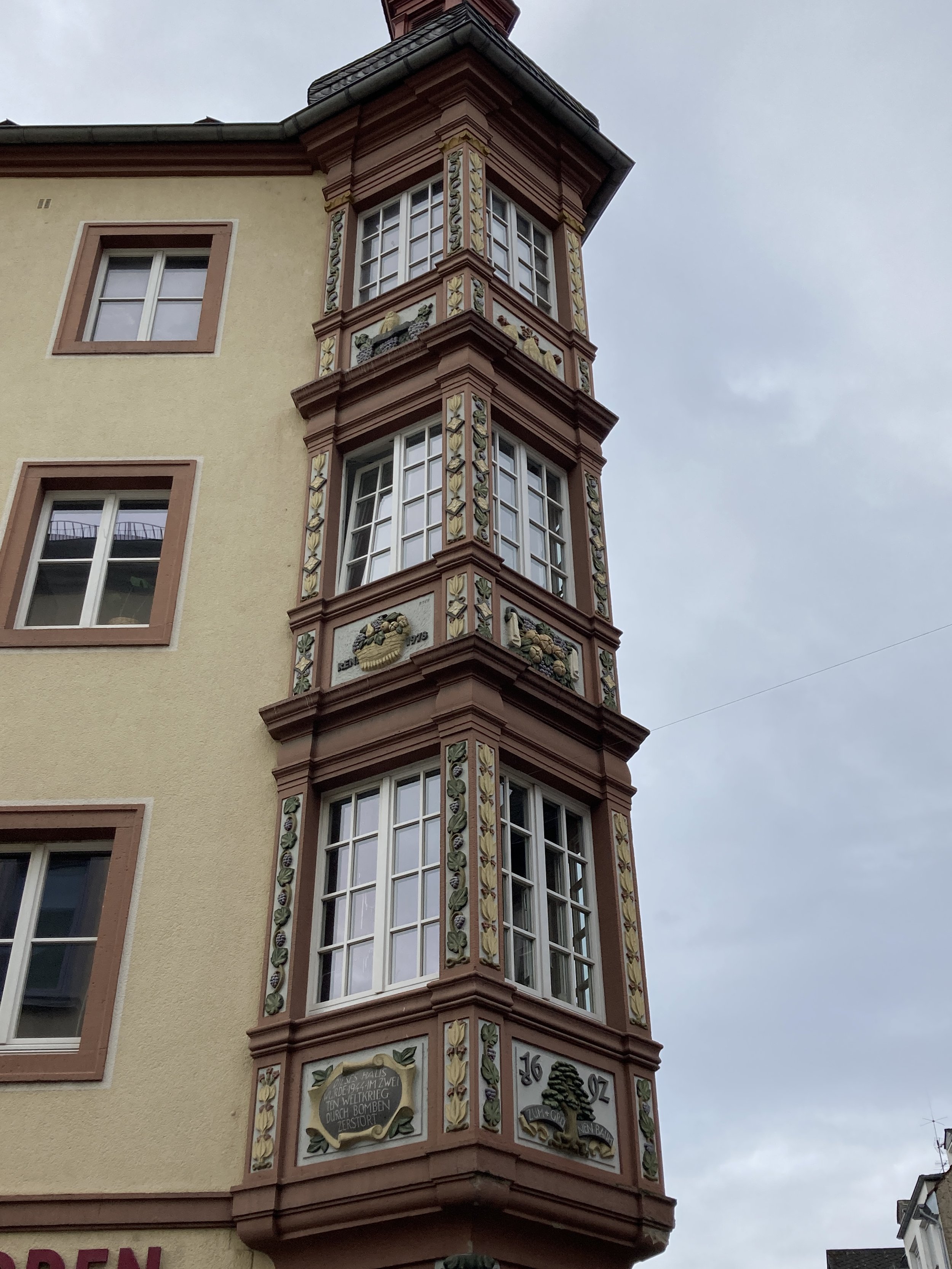Koblenz: Where the Rhine and Moselle Rivers Come Together
This map from the Viking River Cruise site shows our route. You’ll find Koblenz where the Rhine meets the Moselle
Perhaps the most charming city that I visited on my recent Viking Rhine River Cruise was the small town of Koblenz. Koblenz sits at a strategic location – the meeting point of the Rhine and Moselle rivers. In fact, the name Koblenz is derived from the Latin word for confluence. The confluence of these two rivers was historically important both for military and commerce purposes. Ruled at different times by France and Germany, the city has a meld of influences from both cultures.
Koblenz also sits at the north end of the Middle Rhine, a stretch which includes stunning scenery. The landscape along the river showcases terraced lands planted with vines and lots of castles – making it both a UNESCO Heritage Site and an important stop on the many river cruises that sail up and down the Rhine.
Our Viking Ship, the Baldur, docked in Braubach (pictured above), a short bus ride away from Koblenz. Some passengers headed to nearby Marksburg Castle, sitting high on a bluff above the river. Others of us, my travel companion and me included, headed to Koblenz for a morning of exploring the city. Once again Viking provided a delightful local guide who knew the city well and was eager to share its history, culture, folklore, and special places.
Our walking tour began along the Moselle bank towards the Deutsches Eck, The German Corner. This is the very spot where the two rivers meet. It is marked by a large open promenade, flags of all the German states, and a monument with a statue of Emperor Wilhelm I. The statue was destroyed during the war and for many years only the base of the statue remained. In the 1990’s it was rebuilt and today the park-like space also includes a memorial containing three remnants of the Berlin Wall.
From the German Corner, the city walk continued along the Rhine bank. Across the river the Ehrenbreitstein Fortess stands high on a ridge, accessible by a cable car that runs across the river. The walk continued towards the Basilica of St. Castor (Basilika St. Kastor in German), the oldest church in Koblenz.
Basilica of St. Castor (Basilika St. Kastor)
The Basilica is a beautiful church, surrounded by trees and built above Roman ruins. The facade is fairly simple, with tall towers at the corners. The interior has an uncluttered elegance with ribbed and delicately painted ceilings, a beautiful altar, small stained glass windows, and some lovely artwork. It conveys a sense of quiet peacefulness.
Walking through town we encountered pretty houses, tree lined streets, churches, shops, and several delightful squares (platz in German). The squares had interesting fountains, historical markers, shops, and cafes.
Small brass markers were set into the streets, marking former homes and businesses of Jewish residents arrested and later murdered by the Nazis. These were a sobering and moving reminder of the past.
A more lighthearted symbol of the past was the fountain in Willi-Hörtz-Platz. This is the fountain dedicated to Schlängel, the naughty little boy who sometimes spits at people passing by. His image can also be found on manhole covers in town. Who doesn’t love a charming but naughty little boy?
After the walking tour we had enough free time to wander the historic center of town, do some window shopping, and enjoy the interesting architecture along the streets of Koblenz.
It was cold and windy on the day we visited, so my traveling companion and I ended our day in Koblenz with a return to Jesuit Square. There, the Caffé Galestro provided lovely views of the square, a warm place to sit, and a great cappuccino.
Koblenz was one of the most enchanting of our stops along the Rhine, a wonderful combination of fascinating geography, history, culture, and architecture. Definitely a place worth visiting.


